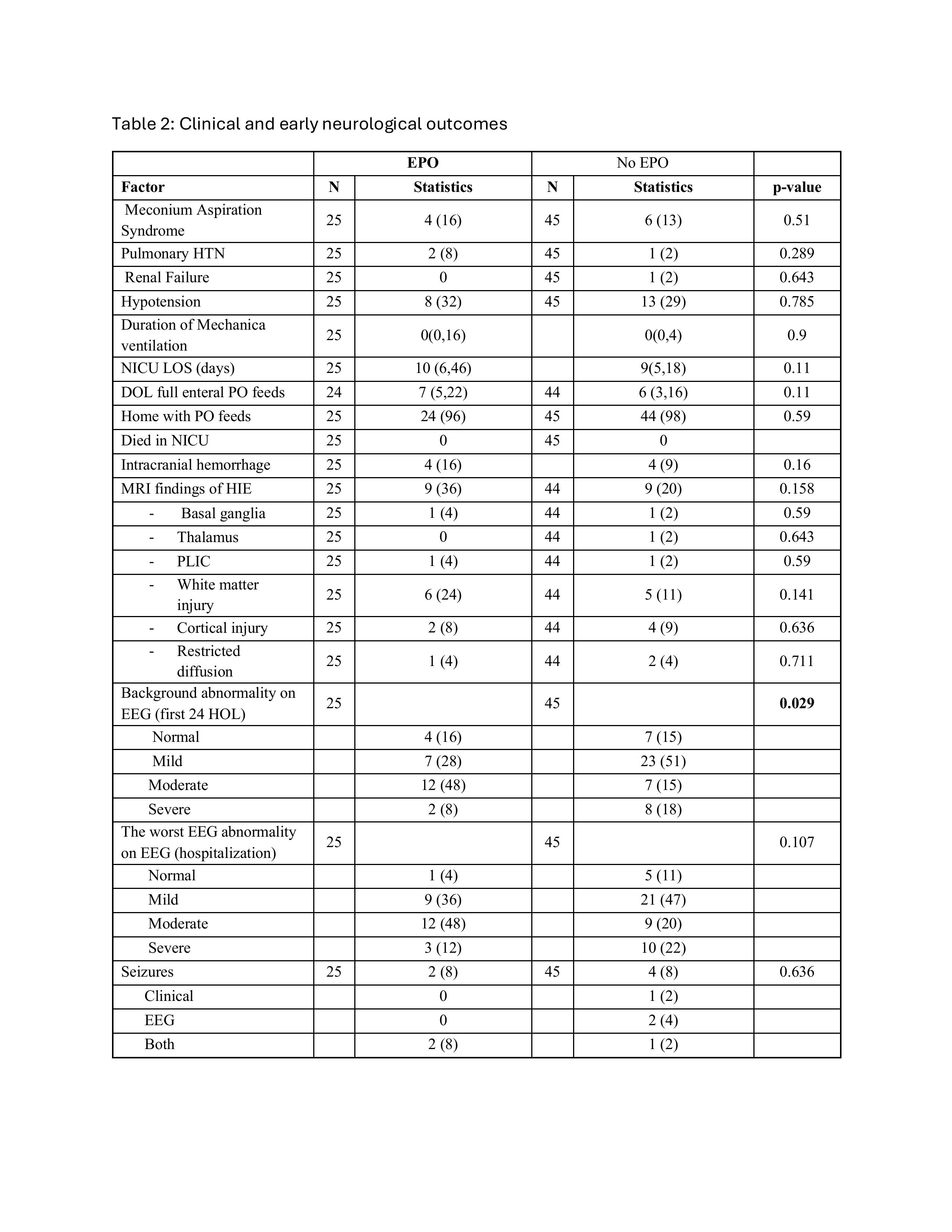Neonatal General 2: Neurology
Session: Neonatal General 2: Neurology
314 - Impact of Erythropoietin on Short term Neonatal Outcomes in Mild Hypoxic-Ischemic Encephalopathy Undergoing Therapeutic Hypothermia
Friday, April 25, 2025
5:30pm - 7:45pm HST
Publication Number: 314.5386
Rakesh Lavu, Cleveland clinic children’s, Beachwood, OH, United States; Abdul Kader S. Surti, Cleveland Clinic Children's, Lorain, OH, United States; Subhash Puthuraya, Cleveland Clinic Children's, Cleveland, OH, United States; Sreenivas Karnati, Cleveland Clinic Children's, Cleveland, OH, United States; Hany Aly, Cleveland Children’s Hospital, Cleveland, OH, United States; Ceyda Acun, Cleveland Clinic Children's Hospital, Cleveland, OH, United States
- RL
Rakesh Lavu, MD
Fellow
Cleveland Clinic Children's
Beachwood, Ohio, United States
Presenting Author(s)
Background: Recent trials indicate that erythropoietin (EPO) provides no significant benefit in neonates with moderate-to-severe Hypoxic-Ischemic Encephalopathy (HIE). However, the potential neuroprotective role of EPO in mild HIE remains unexplored. This study evaluates the impact of EPO on short-term outcomes in neonates with mild HIE.
Objective: To evaluate the effect of EPO on early clinical and neurological outcomes in neonates with HIE undergoing Therapeutic Hypothermia (TH).
Design/Methods: This is a retrospective cohort study conducted on neonates diagnosed with mild HIE who received TH at our center from May 2014 to May 2024. Neonates were divided into two groups: those who received EPO and those who did not receive EPO. Baseline characteristics, delivery and perinatal complications, Apgar scores, cord blood pH, and early clinical outcomes, including duration of mechanical ventilation, incidence of seizures, MRI findings, and EEG abnormalities, were compared between groups. Statistical analyses, including chi-square and Mann-Whitney U tests, assessed group differences with a significance threshold of p< 0.05.
Results: Baseline demographic and perinatal factors, including maternal age, birthweight, and gender distribution, were similar across groups. Notably, the EPO group had a slightly lower gestational age (38 vs. 39 weeks, p=0.01) and higher prevalence of gestational diabetes (24% vs. 7%, p=0.038). MRI findings indicated no significant differences in the incidence of HIE-related injuries between EPO and non-EPO groups (36% vs 20%, p =0.15). EPO administration was associated with a reduced incidence of severe EEG abnormalities within the first 24 hours of life (8% vs. 18%, p=0.029) but did not significantly impact the rates of seizures, worst EEG abnormality during hospitalization or duration of NICU stay. There was no noticeable difference in the clinical outcomes of pulmonary hypertension (8% vs. 2%, p=0.29), hypotension (32% vs. 29%, p=0.79), intracranial hemorrhage (16% vs9%, p=0.16)
Conclusion(s): In neonates with mild HIE undergoing TH, EPO treatment did not lead to measurable differences in MRI-detected brain injury patterns compared to TH alone. These findings suggest limited additional neuroprotective benefits of EPO in mild HIE as reflected by early MRI outcomes. Further research with larger cohorts is needed to validate these findings and assess potential long-term impacts on neurodevelopment.
Demographic data, delivery and perinatal characteristics
.jpg)
Clinical and early neurological outcomes


